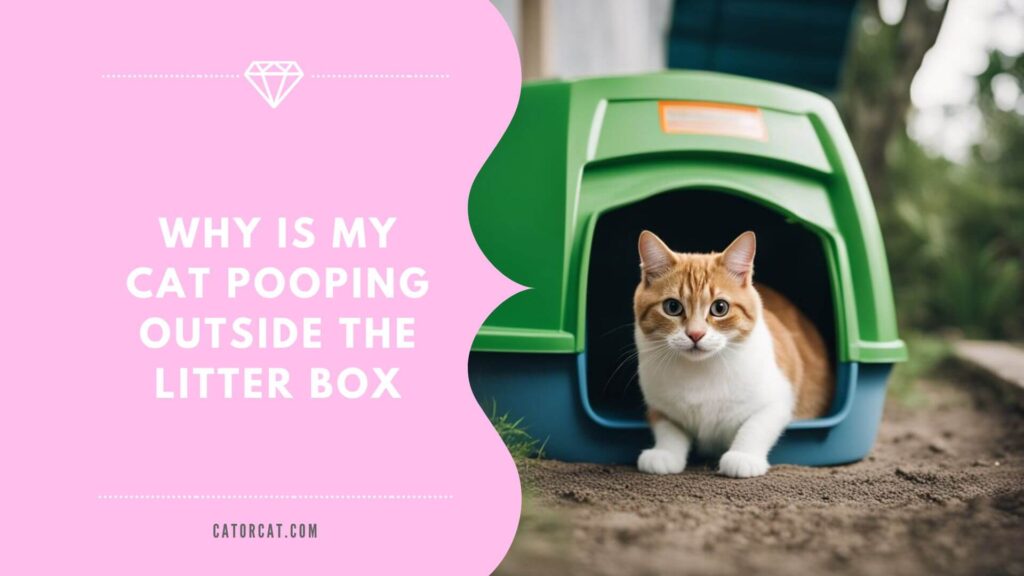
Key Takeaways
- Health problems can cause litter box avoidance.
- Environmental changes may trigger litter box issues.
- Regular maintenance and location choice are crucial for litter box use.
Pet owners can be perplexed and frustrated when a cat chooses to eliminate outside its litter box. Understanding the root causes of why cats defy their litter box is essential for resolving the problem.
The reasons can range from medical issues to environmental stressors and sometimes even a combination of factors. Health problems such as urinary tract infections or feline interstitial cystitis can cause discomfort that associates the litter box with pain, leading cats to avoid it.
Cats are also susceptible to changes in their environment. Stressors such as moving house, alterations to the household, or introducing new pets can disrupt a cat’s routine and lead to litter box issues. Additionally, litter box aversion can be due to more straightforward problems, like a box not cleaned regularly or in an undesirable location.
Review: Kitty Poo Club Cat Litter review
Understanding Litter Box Aversion
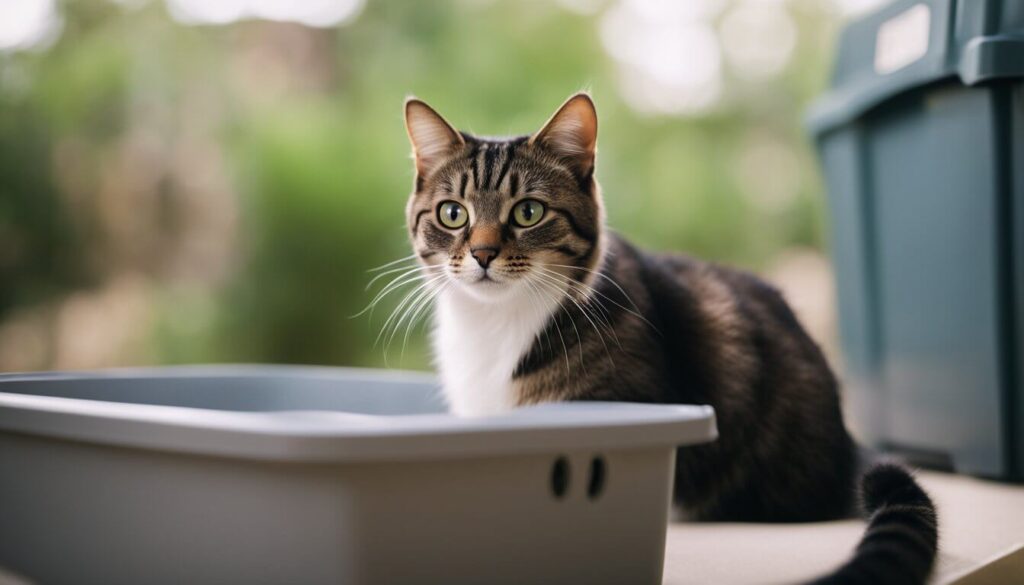
When a cat avoids its litter box, it’s often a sign of underlying issues ranging from medical concerns to behavioral problems. Distinguishing between these can help address the root cause of litter box aversion.
Behavioral Issues
Stress and anxiety can influence a cat’s behavior, leading to aversion to litter box. Changes in the household, such as adding a new pet or family member, can create a sense of insecurity and lead to this issue. Cats can also develop a fear of the litter box if they have had negative experiences there, such as being startled while using it or encountering an unpleasant texture or scent.
- Common behavioral reasons include:
- Change in household dynamics
- Negative litter box experiences
- Dislike of litter type or box style
Medical Issues
Medical issues are a critical consideration for cats that avoid the litter box. Pain while urinating or defecating, often due to conditions such as urinary tract infections or constipation, may lead cats to associate the litter box with discomfort. Senior cats may also suffer from joint pain that hinders their ability to access the litter box, especially if it has high sides.
- Medical reasons to monitor:
- Urinary tract infections
- Arthritis in Senior Cats
- Digestive ailments causing pain
Recognizing these signals and consulting with a veterinarian can be the first step in resolving litter box aversion.
Factors Influencing Litter Box Use
Cats may avoid using their litter boxes due to issues related to cleanliness, maintenance, or the setup and environment of the litter area. Understanding these factors is crucial for ensuring that cats have a pleasant litter box experience.
Review: Pretty Litter – The World’s Smartest Cat Litter
Cleanliness and Maintenance
Regular cleaning is essential for a litter box. A cat’s acute sense of smell can make a dirty litter box unappealing, causing them to avoid it.
Owners should clean the box daily by scooping out waste and provide a deep clean by replacing the litter entirely on a regular basis.
A clean litter box’s absence of fecal odor contributes to a cat’s comfort and willingness to use it.
- Daily: Scoop out clumps and solid waste.
- Weekly: Replace old litter with fresh litter.
Litter Box Setup and Environment
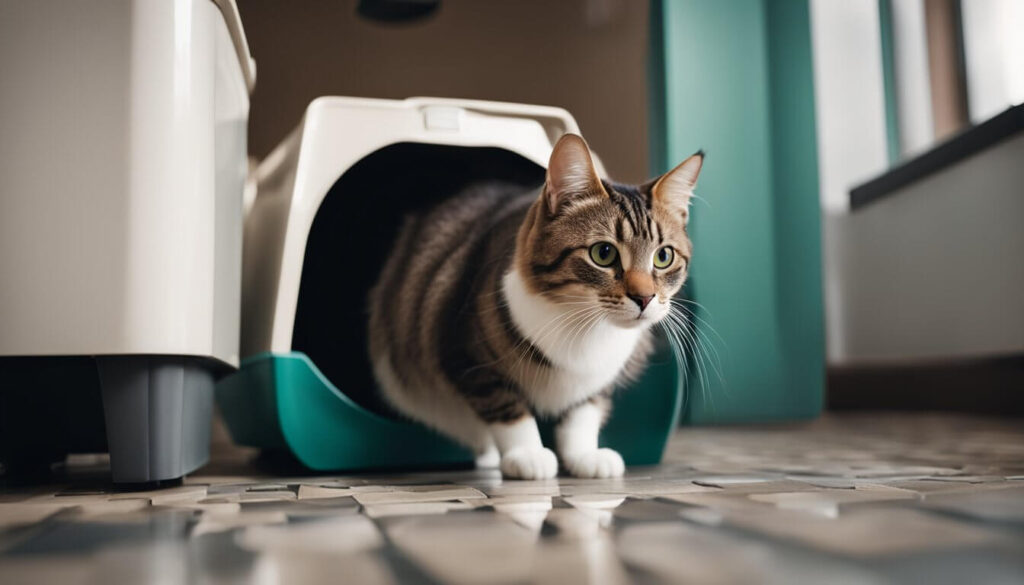
The litter box location is equally important. Cats prefer a quiet, secluded area that provides privacy while being easily accessible.
Sudden noises or high traffic can startle a cat, leading to litter box problems.
The size and style of the box matter, too; some cats may require a new litter box as they grow or if they feel cramped in their current one.
- Location: Quiet, low-traffic area, with privacy.
- Litter Type: Consistent with what the cat is accustomed to using.
Experimenting with different locations or incorporating a new litter box may be necessary if issues persist.
Some cats may also prefer a specific litter type, and changing this can deter them from using the box.
Health and Physiology
In addressing why a cat might be defecating outside their litter box, one must consider health-related factors critically. By understanding the potential health concerns and the role of diet and digestion, caregivers can better address and rectify this behavior.
Potential Health Concerns
Cat health issues can manifest in various ways, including changes in litter box habits. If a cat starts to poop outside their litter box, it may indicate an underlying medical issue.
For instance, constipation can make a litter box visit painful, leading a cat to avoid it, while diarrhea may cause a cat not to reach the litter box in time.
Additionally, urinary tract infections can create discomfort and urgency that disrupt everyday litter box use.
Diet and Digestion
Diet directly affects a cat’s digestive health. Sudden changes in diet can lead to digestive upset, which may result in bowel movements outside the litter box.
Owners should ensure that their cat’s diet is well-balanced and that transitions to new foods are gradual to avoid digestive issues.
Adequate hydration is also crucial in preventing constipation and supporting overall digestive health.
Managing Multi-Cat Households
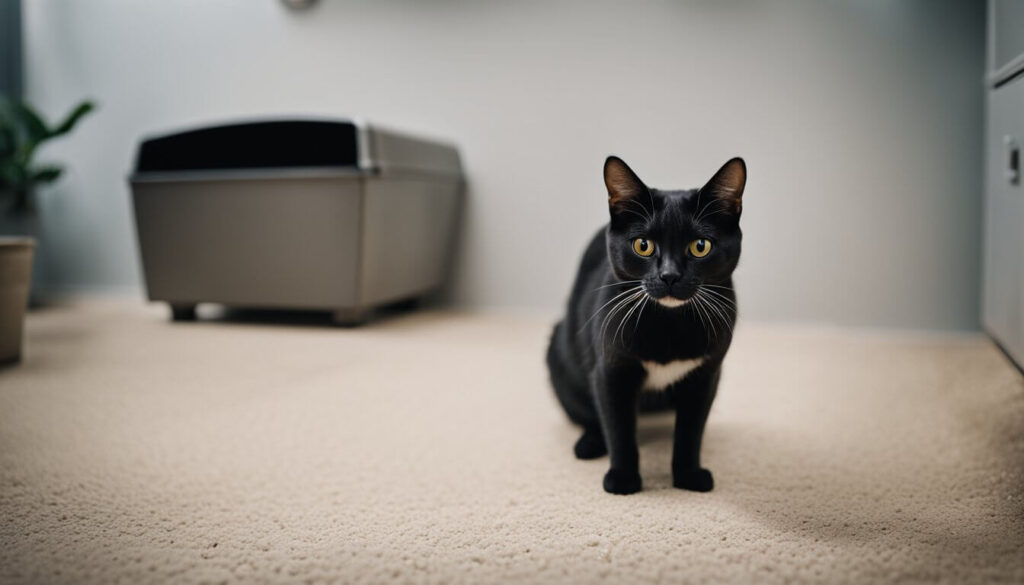
Maintaining harmony while managing litter box usage in multi-cat households can be challenging. Careful attention to the number of available litter boxes and the social dynamics among cats is crucial to preventing inappropriate elimination behaviors.
Adequate Litter Box Availability
Households with multiple cats need to have a sufficient number of litter boxes. The general rule of thumb is to provide one litter box per cat, plus one extra, to ensure each cat has access to a clean space when needed.
Multiple litter boxes should be placed in various quiet and accessible home areas to accommodate each cat’s preferences and reduce competition.
- Number of Litter Boxes: One per cat, plus one extra.
- Placement: Quiet, accessible locations throughout the home.
Minimizing Stress and Conflict
Stress and anxiety in multi-cat households can lead to one or more cats pooping outside the litter box.
It’s essential to create a peaceful environment that minimizes conflicts between cats. This includes providing adequate resources such as food, water, and scratching posts in separate areas to prevent competition.
Observing the cats’ interactions and intervening when necessary can help reduce stress and anxiety that might lead to litter box avoidance.
- Resources: Separate food, water, and scratching areas.
- Observation: Regular monitoring of cat interactions.
Addressing and Treating Litter Box Issues
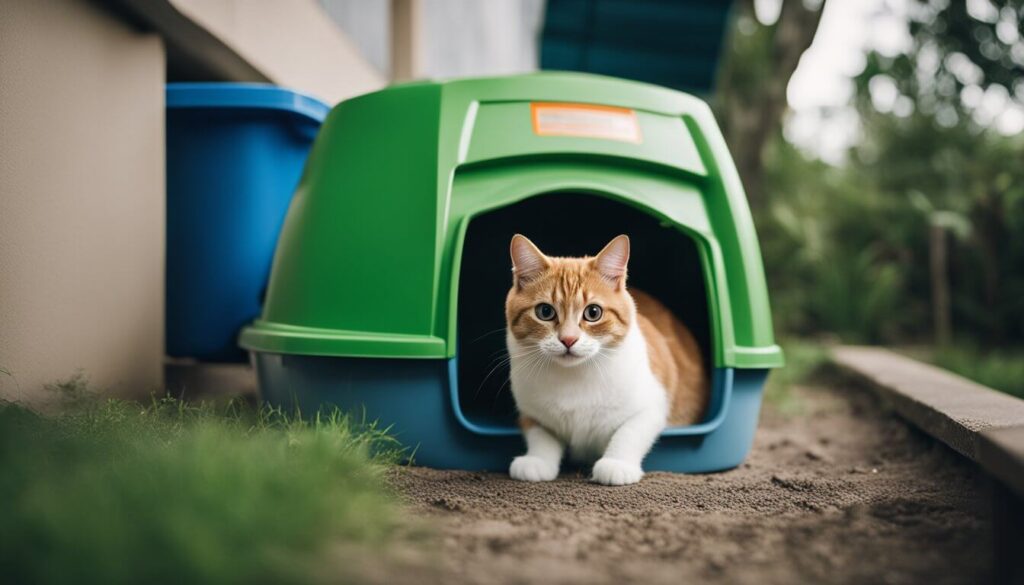
When a cat begins to eliminate outside of the litter box, it is crucial to approach the issue with both behavioral strategies and potential medical treatments.
Behavioral Modification
Modifications in the home and litter box management can often resolve litter box avoidance.
The first step is to examine the litter box’s position. It should be in a quiet, low-traffic area. If the household has multiple cats, there should be one litter box per cat, plus one extra.
Changing the type of litter to the cat’s preferred or cleaning the box more frequently can also encourage proper use.
A new type of litter should be introduced gradually to prevent further stress.
Medical Treatment
Should behavior modification not suffice, or if the problem persists, calling a vet is imperative to rule out health issues such as urinary tract infections or other medical conditions.
A thorough examination by a vet can determine whether there is a need for medical treatment.
Following a vet’s management recommendations, including possibly prescribing medications or dietary changes, is essential for the cat’s health and well-being.
Effective Cleaning Solutions
Maintaining a clean environment is essential when addressing the issue of a cat pooping outside the litter box. Certain cleaning products are particularly effective in eliminating odors and stains, thus discouraging the behavior.
Related: How to dispose of cat litter
Choosing the Right Cleaning Products
Enzymatic cleaners are a top choice when selecting cleaning products to tackle pet waste.
They work by breaking down the proteins in waste material, effectively removing stains and odors at a molecular level.
Cleanliness is crucial, as cats may avoid using a litter box that retains the scent of previous accidents.
It is essential to choose cleaners that are specifically formulated for pet messes to ensure the best results.
To thoroughly clean areas where a cat has soiled, one should:
- First, remove any solid waste with a scoop or paper towel.
- Clean the area with an enzymatic cleaner, following the instructions on the product label.
- Allow the cleaner to sit for the recommended time to break down waste and odors.
- If necessary, repeat the process to eliminate stubborn stains and odors thoroughly.
Related: Can you flush cat litter
Creating a Positive Litter Box Experience
An environment of comfort and ease should surround the litter box to ensure a cat uses it properly.
Location is vital; it should be in a quiet, low-traffic area yet easily accessible, especially for cats coping with pain or arthritis.
Size Matters: Opt for a litter box that’s spacious enough for your cat to turn around and squat comfortably. A cramped box may discourage use.
Litter Type: Some cats prefer certain types of litter over others, whether clumping, non-clumping, scented, or unscented. Observing the cat’s behavior can help determine its preference.
Cleanliness: Keep the litter box clean, as a dirty litter box can deter a cat from using it.
| Frequency | Task |
|---|---|
| Daily | Scoop out waste |
| Weekly | Change litter (if necessary) |
| Monthly | Wash and disinfect the litter box |
Providing a stress-free litter box experience can alleviate issues like a cat pooping outside the litter box.
Observe the cat’s routines and health, modify as necessary, and consult a vet if sudden changes in litter box habits occur, as they can signify health problems.
Frequently Asked Questions
1. Why would a cat suddenly start pooping outside the litter box?
A cat may suddenly start pooping outside the litter box due to various reasons. Health problems such as constipation, diarrhea, or inflammatory bowel disease can cause discomfort and a sense of urgency, leading a cat not to reach the litter box in time. Stress, a smelly or unclean litter box, or even a change in the household environment can contribute to this behavior. It’s essential to consider these factors and consult a veterinarian if the issue persists.
2. Why is my cat pooping on the floor with a clean litter box?
A cat might defecate on the floor even with a clean litter box for various reasons. These include medical concerns, stress, or disliking the litter type or box location. It is essential to observe your cat and consider any recent changes in their environment or routine that could affect their behavior.
3. How do you punish a cat for pooping outside the litter box?
Punishing a cat for pooping outside the litter box is generally not recommended as it can lead to increased stress and exacerbate the problem. Instead, focus on positive reinforcement and try to identify and address the underlying cause of the behavior. Consulting a veterinarian or a cat behaviorist can guide how to modify this behavior effectively and humanely.
4. Why would a cat suddenly start pooping in the house?
A cat may suddenly start pooping in the house for similar reasons to pooping outside the litter box. Health issues like constipation or diarrhea can cause discomfort, leading to accidents. Environmental stressors or changes in the home, such as a new pet or moving furniture, can also disrupt a cat’s routine. It’s crucial to rule out medical problems first by visiting a vet and then looking at potential stressors in the home.
